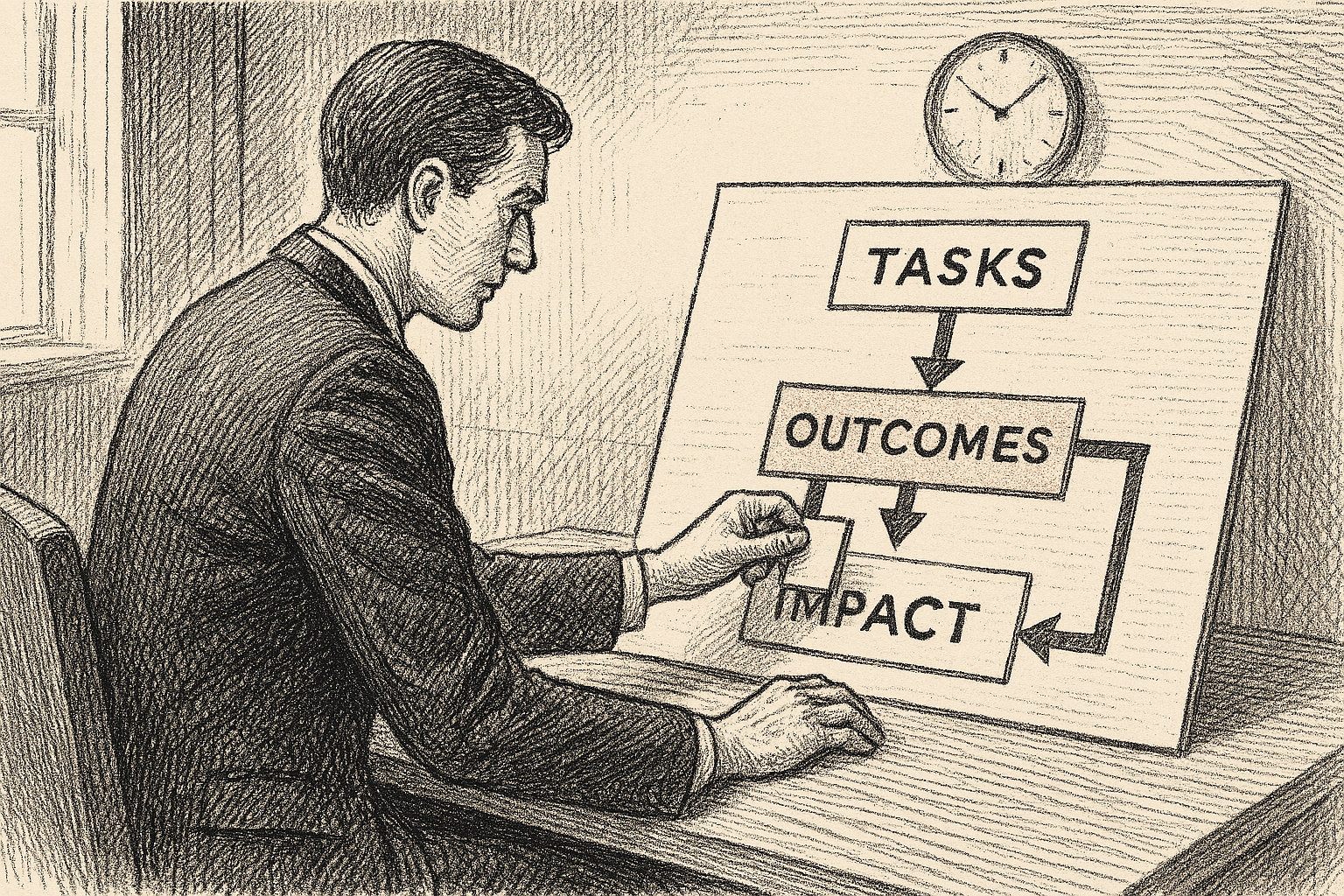From Tasks to Outcomes: Rethinking Your Weekly Planning Routine
Most professionals plan for tasks. But leaders plan for outcomes. This article helps you shift your weekly routine from busywork to impact—with research-backed strategies to align your week with strategic movement, influence, and personal growth.
The Hidden Anxiety Behind the Monday Morning Checklist
You’ve blocked your calendar, prioritized your to-do list, color-coded your Notion dashboard. And yet, by Thursday afternoon, you feel a creeping sense of futility.
What exactly did I accomplish this week?
This isn’t just a productivity issue. It’s a leadership clarity issue. The deeper unease many ambitious professionals feel—the sense of being busy yet stagnant—is often a symptom of planning routines that prioritize activity over advancement. And for mid-career leaders preparing for the C-suite, this weekly misalignment compounds over years, quietly derailing long-term strategic growth.
When Productivity Becomes a Trap, Not a Tool
Most high performers were trained to optimize for throughput: complete more tasks, hit more deliverables, demonstrate capacity. But executive readiness demands a shift in mental model—from productivity to impact, from input to outcome.
The modern workplace rewards responsiveness, but not necessarily reflection. As a result, many leaders over-rely on checklists to manage ambiguity. Instead of confronting the deeper strategic question—What does success look like this week?—they default to what’s most visible or urgent.
This creates what psychologists call a completion bias—a tendency to prefer finishing small, easy tasks over starting complex, meaningful ones[1]. It’s emotionally rewarding, but strategically self-defeating.
What the Research Reveals
A 2021 study in Organizational Behavior and Human Decision Processes found that individuals consistently over-prioritize urgent tasks—even when non-urgent tasks carry more long-term value[2]. The researchers concluded that time-sensitive items trigger a stronger emotional response, leading to suboptimal planning and diminished strategic alignment.
This urgency bias doesn’t just affect junior employees. In high-stakes leadership roles, it shows up as reactivity: a tendency to prioritize inboxes over initiatives, updates over foresight.
And here’s the kicker: the same study found that when participants were explicitly asked to rank outcomes instead of choose tasks, they made more effective decisions. The shift was cognitive—and it was teachable.
From Performer to Architect: A Weekly Reframe
C-suite leaders are not measured by their productivity, but by their influence. The same logic should apply to how we plan our weeks.
Instead of asking:
- What do I need to do this week?
Ask:
- What needs to be true by the end of this week?
This question forces a shift in perspective. It moves the conversation from tasks to truths—from checking boxes to designing conditions for success.
“Busy weeks make us feel competent. Outcome-driven weeks make us feel powerful.”
To embody this shift, consider structuring your planning around three types of outcomes:
- Strategic Movement: What part of a longer-term initiative will move forward this week?
- Relational Impact: Who needs to feel more clarity, trust, or momentum because of your actions?
- Personal Mastery: What skill, mindset, or clarity will you develop by Friday?
This triad—strategy, influence, growth—mirrors the executive lens you’re building toward. It centers your week on outcomes that matter at your level.
Design for Outcomes, Not Just Tasks
To shift from task-centric to outcome-centric planning, apply a three-step model each Friday or Monday:
- Reverse Engineer the Result: Start by articulating the ideal Friday headline. (e.g., “Q2 proposal finalized and aligned with both product and legal.”) Then list only the critical actions required to achieve that result.
- Timebox the Meaningful: Protect 60–90 minute blocks for strategic work. Schedule them before reactive meetings fill the week.
- Name the Invisible Work: Relationship-building, influence conversations, and quiet thinking time are all outcomes too. Make them visible on your calendar.
This isn’t about doing less—it’s about leading more. Weekly planning becomes a leadership practice, not an operational chore.
The Quiet Power of Weekly Identity Work
Ultimately, rethinking your weekly planning isn’t about efficiency. It’s about identity.
The question is not “How much did I get done?” but rather, “Who am I becoming through what I choose to make time for?”
For mid-career professionals navigating the shift from execution to influence, this weekly ritual can serve as both compass and mirror.
It’s a reminder: You’re not just here to clear the decks. You’re here to shape the future.




